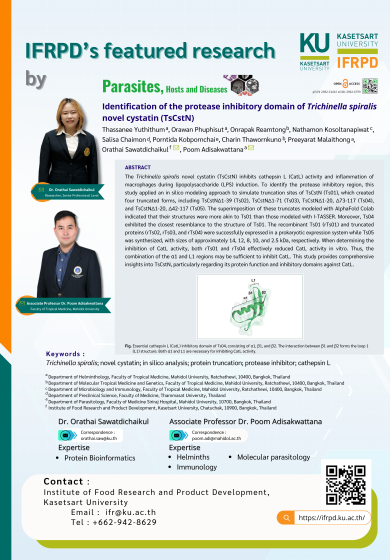| ผลงานวิจัย | ดร.อรไท สวัสดิชัยกุล และคณะ |
| Keywords | Trichinella spiralis; novel cystatin; in silico analysis; protein truncation; protease inhibitor; cathepsin L |
| Telephone | 0 2942 8629 (1905) |
| orathai.saw@ku.th | |
| URL | https://pubmed.ncbi.nlm.nih.gov/39218632/ |





